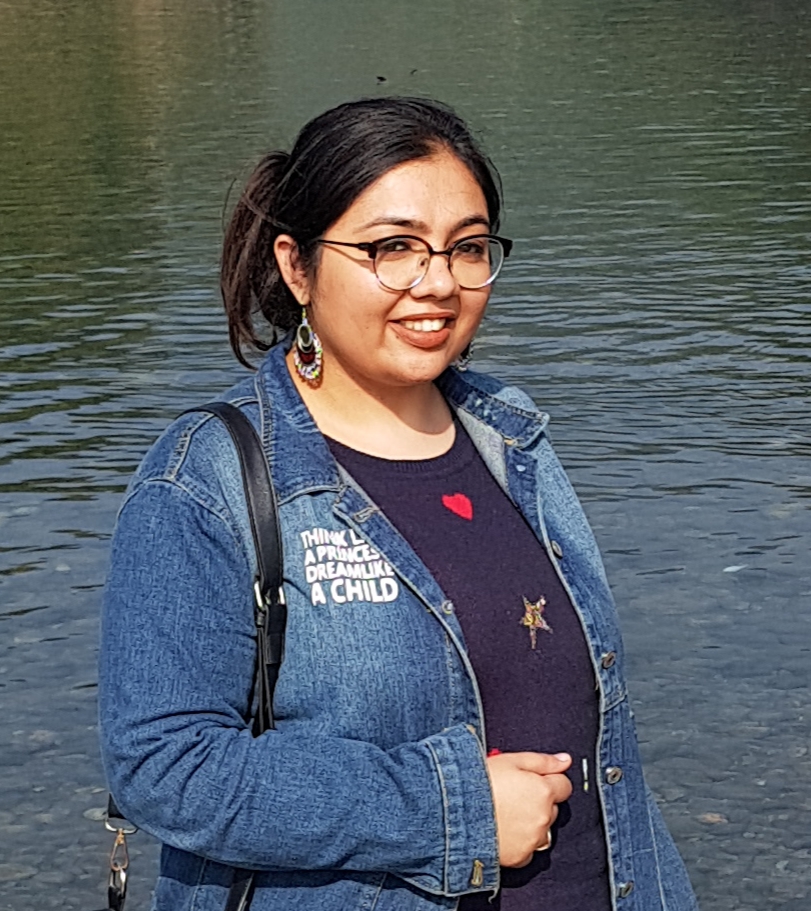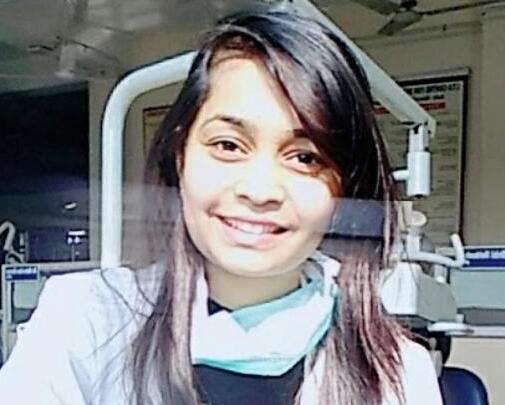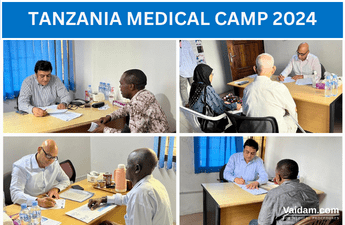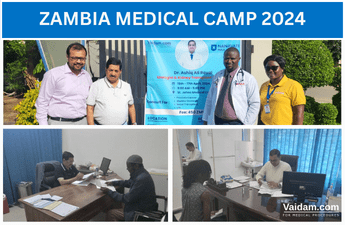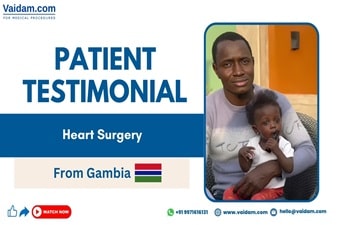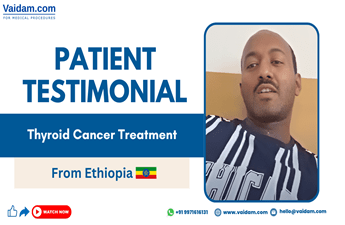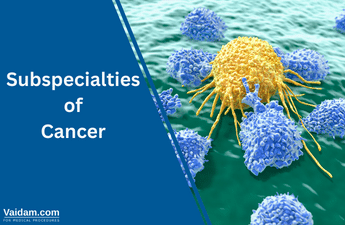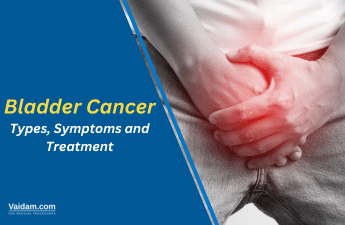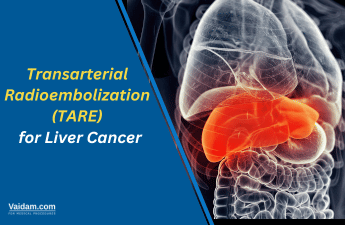Fundamentally, cancer may be referred to as a condition, typically caused by the abnormal division of cells and infiltration into the normal body tissues.
Facts and figures: (by WHO)
- Cancer is the second leading cause of increased mortality rate globally. It leads to 9.6 million deaths in 2018.
- Every one is six deaths is caused by cancer.
- 70% of the deaths occur in low and middle-income nations.
Get in Touch with Medical Experts
The Most Common Signs and Symptoms
The manifestation of cancer cannot be documented in a few signs and symptoms. This is because cancer can happen in any part of the body and spread anywhere. The exact symptoms vary with individuals. However, some of the most common signs include:
- Tiredness or fatigue
- Unintentional weight changes
- A lump or thickened area under the skin
- Changes in the skin like redness, sores, changes in moles, or darkening of the skin.
- Changes in the bowel movements
- Dysphagia (difficulty in swallowing)
- Hoarseness of voice
- Difficulty breathing
- Persistent cough
- Unexplained fever
- Unexplained muscle or joint pain
How is cancer diagnosed?
If you experience certain abnormalities persistently for a long time, you must consult a doctor. The doctor will start by taking a detailed medical case history. This includes details related to the symptoms, past medical history, family history, and any social habits like smoking, drinking or tobacco.
This is followed by a clinical examination done by the doctor during the first appointment. This will include examining the affected area by palpating them and performing some manual tests. The best oncologists in India suggests that if the symptoms indicate chances of cancer, specific investigations are done such as,
Lab investigations
Samples of body fluids such as blood, urine, lymphatic fluid are taken and examined in the laboratory to measure levels for various enzymes and chemical substances. Changes in the levels may be indicative of cancerous cells. This is because an increased growth in certain types of cells will either produce an excess amount of a chemical substance or consume it.
Some other investigations also focus on testing tissue samples for tumour markers. The tumour markers are substances that are produced by cancer cells or other cells in response to cancer. In cancerous conditions, the levels of tumour markers are increased manifolds.
Radio-imaging tests
There are many types of radio-imaging tests used to detect cancer:
CT Scan - This is an x-ray machine attached to a computer. It can take a series of pictures of an organ from multiple angles. This enables to creates 3D image of the area. Some CT scans involve administration of contrast dye material by oral intake or intravenous injection. This helps to read the pictures easily by highlighting certain areas of the body.
MRI (Magnetic Resonance Imaging) - This machine makes use of magnetism and radio waves to take sliced pictures of the body. The slices are utilized to read the details. This facilitates in differentiating between healthy and unhealthy tissue. MRI scan also includes an injection of special dye in some cases to increase the contrast.
Nuclear scan - This indulges use of radioactive material to take pictures of the internal organs of the body. A small dose of radioactive material is injected through the bloodstream, which gets collected in the bones or organs.The scanner is able to detect and measure the radioactivity and the body helping in diagnosis.
Bone Scan - This is also a type of nuclear scan to look for abnormal areas, specifically used to diagnose bone cancer. The radioactive material is injected into the vein. This substance gets accumulated in the abnormal areas of the bone, which is taken up by the scanner. These areas are known as “hot spots.”
PET scan - This is another type of nuclear scan used to take 3D pictures of areas by accumulation of glucose. The test is based on the fact that the cancerous cells take up more glucose than normal cells. An injection of radioactive glucose is injected into the patient before the scan.
Ultrasound - This type of exam uses high-energy sound waves. The sound waves are echoed to the tissues in the body. The computed linked to the machine uses these echoes to create a picture of areas being scanned.
X-rays - Lose-dose radiations are used to create pictures of internal organs. The patient stands still in a position and x-ray beam is directed to a part of the body.
Biopsy - This is a very specific test in which a sample of affected tissue is removed and sent for laboratory investigations. The tissue is examined under the microscope and the report is sent. The biopsy is of two types :
Biopsy with a needle: This is of two types namely Fine-needle aspiration and core needle biopsy. The needle is used to withdraw tissue or fluid to be examined. Most commonly used for bone marrow aspirations, breast, prostate and liver biopsies.
Endoscopic biopsies - A thin, light tube called an endoscope is used to examine the affected areas. The endoscope moves through the natural opening of the body. This can also be used in a therapeutic way by removing the abnormal tissue through the same endoscope. Bronchoscopy and colonoscopy are some examples.
Methods of treatment
Types of cancer treatment :
- Surgery - The cancerous tumour is excised surgically.
- Chemotherapy - Intravenous drugs are given to kill cancerous cells.
- Radiation therapy - Killing cancer cells by using high power energy beams called x-rays.
- Immunotherapy - It uses the body's immune system to treat cancer. Immunotherapy helps the body’s immune system to recognize the abnormal cells and attack them.
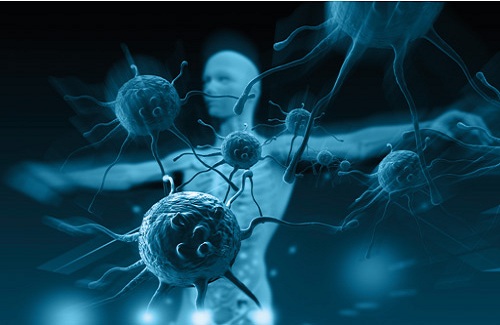
- Hormone therapy - Some types of cancers are aggravated by hormones in the body such as breast cancer and prostate cancer. Removing these hormones or blocking their effect can help to stop the growth of these cells.
- Targeted drug therapy - This form of treatment targets the features that help cancer cells to survive.
Depending upon the invasion of cancerous cells, the primary objective of the treatment may vary. The objectives may be of the following types:
Primary treatment - The goal of primary treatment is to destroy the cancerous cells from the body. It is done in cases of benign tumours and done by surgery. Radiotherapy or chemotherapy can also be used along with the surgery.
Adjuvant treatment - The goal is to kill any cancer cells that are left after the primary treatment to reduce any chance of recurrence. Radiation therapy, hormone therapy and chemotherapy are most commonly used as adjuvant treatment.
Palliative treatment - This is used to relieve side effects and symptoms of cancer. This includes radiotherapy, chemotherapy, hormones and other medications. This is used along with the other forms of treatment.

